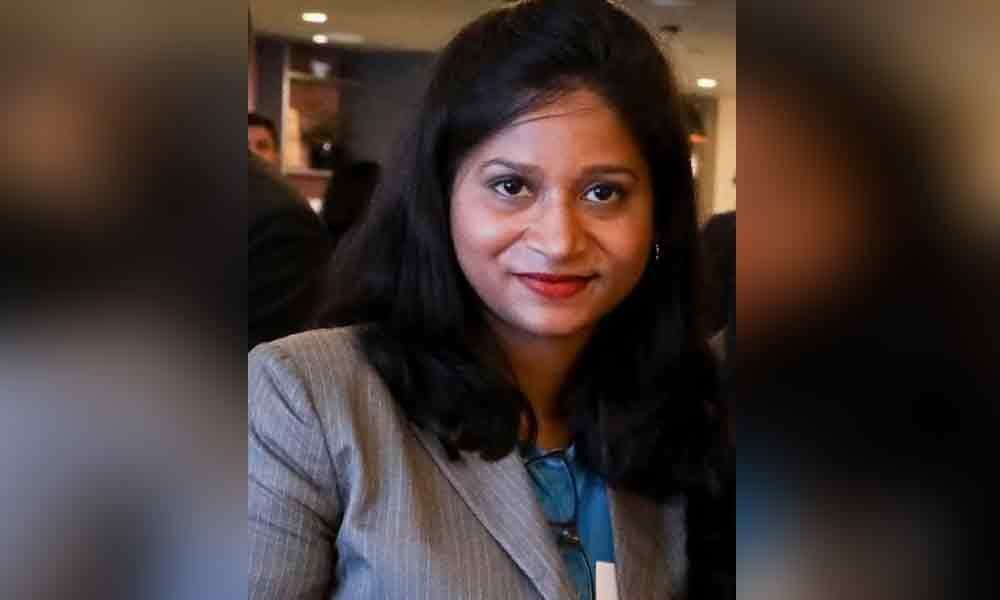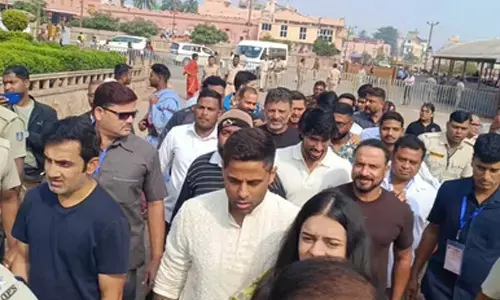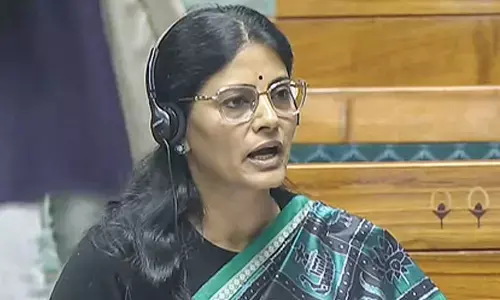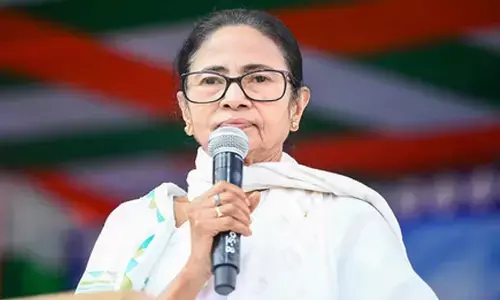NEP must strengthen 25% provision for poor children to realize 'Sabka Saath,Sabka Vikas & Sabka Vishwas'

Shiva, 8 year-old son of Indrajeet, a day laborer, works in the famous bangle industry of Firozabad as a child laborer. With meager wages, Indrajeet was in no position to afford the fees of any of the private schools running nearby.
Shiva, 8 year-old son of Indrajeet, a day laborer, works in the famous bangle industry of Firozabad as a child laborer. With meager wages, Indrajeet was in no position to afford the fees of any of the private schools running nearby.
Mohammad Iqrar and his wife Tabassum, residing in Thakurganj, Lucknow, are polio survivors with severe disability. Iqrar is the sole bread winner in the family and drives an e-Rickshaw for subsistence. While his three kids barely got two meals a day, schools were luxuries they could only stare at from far.
With growing socio-economic inequality in the society that now reflects in our schooling system, the policy of RTE 12.1.(c) i.e. '25 percent' reservation in entry classes of unaided private schools for children belonging to Economically Weaker Section (EWS) and disadvantaged groups, had created a magnificent opportunity for bridging this gap. The socially inclusive classrooms hence created not only offer better learning opportunity to poor kids but also benefit the rich kidswho become more generous, empathetic and pro-social, as per research by Prof Gautam Rao of Harvard University.
Thanks to this provision, thousands of children working as laborers including Shiva were rescued in 2015 and admitted in private Schools in Firozabad district of Uttar Pradesh. Even Mohammad Iqrar's eldest daughter Mehak got admission in a prominent private school in Lucknow that her parents would, otherwise, have not been able to afford.
Thousands of such children are waiting to be rescued and admitted in schools under RTE across different corners of the country.
Sadly, these children may never get the chance if the government decides to abolish RTE 12.1.(c) in the New Education Policy. With the recent call for review of this provision of RTE Act in the National Education Policy (NEP), future of millions of such Shivas and Mehaks lays in jeopardy.
The draft NEP report mentions that the policy has been implemented with very 'mixed results'.
Instead of questioning why some states have failed in the satisfactory implementation of this clause (to this day 20% EWS seats are filled and only 80% private schools are participating in the policy at national scale even after nine years of Supreme Court Order dated 12 Apr, 2012) the Kasturirangan committee plans to reinvent the policy itself.
I attempt to address the five concerns raised by the NEP committeeregarding the viability of RTE 12.I.(c).
First, the Committee states that the clause is not quite in tune with the principle of 'autonomy' of institutions, and advocates for letting private schools decide on how they would like to improve diversity and inclusion in their schools. This reasoning is not valid as the Supreme Court judgement in Society of Unaided Private Schools vs. Govt. of India on 12 April, 2012 clearly declares the clause as 'constitutionally valid' and a 'reasonable restriction' in public interest that does not undermine the autonomy of private schools.
Moreover, expecting private schools that have been fighting tooth and nail against implementing this law despite stringent efforts from states, to implement it voluntarily would be extremely farfetched. If at all, it would lead to cherry picking of students defeating the entire purpose of inclusion.
It is important to understand that the current perception of financial stress being the key reason behind such a resistance is an entirely misplaced argument. Our work in this field indicates that almost 90% of the private schools charge fee less than the reimbursement amount while many of the elite 10% schools voluntarily refuse to accept reimbursement in order to keep themselves out of the purview of Right to Information (RTI). So essentially it is the requirement of transparency inherently passed on with the acceptance of public money that seems to concern them more than financial viability.
While private schools were decently represented in the NEP consultations, why had poor parents - the largest stakeholders in this policy been entirely left out? Does this not constitute a contradiction and a conflict of interest?
Second, the draft mentions that this policy opens up a variety of possibilities for 'corruption' such as the manufacturing of fake student numbers and certificates, increases in fees etc. There is corruption within police and traffic control system, so should we dismantle the entire police and traffic control system? You don't throw the baby out with the bathwater. Besides, does government have any empirical evidence (not anecdotal cases) that substantiates above claim of corruption at a level significant enough to merit such diminution of the policy? What NEP fails to realize that it is in fact a governance challenge and can be solved with the right systems and processes in place. For instance, to prevent schools from mushrooming overnight and hiking fees, a minimum criteria of three years of successful operation and furnishing fee data for three years could be made mandatory. A centralized and integrated MIS system can easily keep a check on schools using fake admission numbers. A technology based tracking mechanism can help track progress of children across grades in schools. Some of these practices are already in operation.
Third, the draft report also mentions that the large amounts of money and effort spent on implementing this clause may be more effectively spent by investing on public education system especially in disadvantaged areas. Let's consider Uttar Pradesh, one of the most resource challenged state that accounts for almost 30% of the country's total RTE seats. Assuming the policy is implemented in it full capacity of 6 lac admissions every year cumulatively added over eight years to 48 lacs active enrolments, the total reimbursement expense would be only 10-12% of the entire SSA budget of the state. When thousands of crores can be spent in building symbolic statues, this is a miniscule amount government can certainly afford to spend on a deeply impactful scheme with a promise of inclusion and social justice.
Further, Richard D Kahlenburg, a senior fellow at Century Foundation, a United States-based think tank, demonstrates in his research that 'the only educational intervention known to have greater return on investment than socioeconomic integration is very high quality early childhood education'. While government should continue to invest in improving public schools, the bigger potential of impact by socioeconomic integration in private schools must not be overlooked.
Fourth, the myth that EWS children struggle to cope and perform while eventually dropping out has been broken at numerous occasions when EWS children have outperformed their regular counterparts in the classrooms. Children at the tender age of 3-6 do not discriminate, adults do. As long as adults keep their influences away, children will easily make friends with each other and benefit each other.
https://www.aft.org/sites/default/files/periodicals/Kahlenberg.pdf
Fifth, the draft NEP also mentions the declining trend of enrolment in government schools while private schools are gaining students. The fact is true but the causality is not. For instance, in Uttar Pradesh, 51% children (significantly higher than country's average) were enrolled in private schools in 2014 when UP had not even begun implementing RTE 12.1.(c). Hence blaming this clause for proliferation of private enrolment is an incorrect statement.
Parents are increasingly admitting their children in private schools out of the perception that those are better in quality. The falling state of public schools has only reinforced their perception. Public schools with a captive market of poor children never had a better motivation to improve their quality and perception than now. It is a great opportunity for public schools to reclaim their glory when parents would chose them out of their own wish and not due to lack of alternative option.
The larger fact remains that the above mentioned instances are shortfalls in the implementation and governance of this policy which needs to be strengthened collectively by the different stakeholders.
Few suggestions that can help strengthen governance and implementation of this policy:
A. The Government should provide incentive to private schools for implementing the clause so that they are motivated to participate voluntarily. It can be linked to their tax exemption certificates like 12A
B. Timelines should be fixed for the government to reimburse schools and charge penalty at daily rates for missing the deadline. This would encourage governments to reimburse schools in time
C. Policy should be amended to add more clarity, penal provision for non-compliance, strong governance mechanisms and choice to parents
It would be true policy inclusion if poor parents - the largest stakeholders in this policy are also involved and allowed to voice their opinion in the decision making.
It shouldn't be surprising that almost 60-70% of the children impacted from this scheme belong to minority and Dalit communities. This scheme has the potential to impact 20 million children in the next 10 years and is easily one of the largest public private partnership programs in the world promoting social justice. Abolishing such a powerful and inclusive scheme will be a major lapse in democracy and will be the end of the dreams of millions of Mehak's and Shiva's. Strengthening it will in turn be a testament to the promise of 'SabkaSaathSabka Vikas', and now 'SabkaVishwas'.
Author:
Samina Bano is an Ashoka-Fellow & Acumen-Fellow working on a provision in Right-to-Education Act that enables poor children to study in private schools to promote social inclusion. She is the Founder & CEO of RightWalk Foundation. Samina is recipient of Abdul Kalam Award for Excellence in Governance (KIGA) and BMJF's Goalkeeper 2018 & 19. She holds MBA from IIM Bangalore.
Ashoka Fellow | Acumen Fellow | The Better India | The Logical Indian | Forbes | TEDx Talk | Outlook| |NDTV | EducationWorld Top 26 NGOs Impacting Education | AajTak | Yourstory 2018 | ScooNews India's Top Ed Influencer | Two Circles | Jagran | IamGujarat | Eenadu Hyderabad















